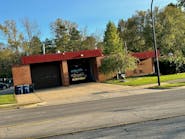If a fire were to rip through your home, or if someone in your family needed emergency medical treatment, would you know how quickly the fire department can get there? Most people don't, which is why KCRA 3 Investigates looked into the questions.
For fire departments, time is more than money; it's the difference between damage and destruction, life and death.
"The quicker you can attack the fire, obviously, the less damage you're going to have, and the higher probability you're going to save someone's life," said Sacramento Fire Chief Joe Cherry.
Fire department response times are so critical that the National Fire Protection Association created a national standard. It should be a one-minute turnout time -- where firefighters suit up, load up and leaving the station -- and four minutes travel time, for a total of five minutes from station house to scene. And it should happen 90 percent of the time.
The standard is voluntary, but many departments use it as their goal. KCRA 3 Investigates checked average response times around the valley for 2004.
Stockton is the highest rated fire department in the area, with all of its 13 stations coming in at five minutes or under in response time.
Elk Grove has six stations, with half reporting response times of more than five minutes.
Sacramento Metro Fire Department covers about 400 square miles of the county. Of the 35 stations reporting data, nine stations' response times are more than five minutes.
Sacramento City Fire Department, which covers 140 square miles, has 22 stations. More than half take more than five minutes to respond.
"They fall over that goal maybe 15 to 30 seconds, depending. Then we have three fire stations that had a longer response time than what we'd like to see. However, those stations were all in the Natomas community," Cherry said.
That problem appears solved. A new station opened in North Natomas, where response times were high.
But former state Fire Marshal Ronny Coleman said that growth in parts of the valley is putting pressure on local fire departments.
"If the growth is not linked to the development of the fire department infrastructure, you can reach points in time in which people are living in areas that have inadequate response times," Coleman said.
Growth isn't the only obstacle slowing down fire companies, according to Cherry. He points to a host of problems, including traffic, freeway design and cell phones.
"The new response-time issue is about the time it takes you to communicate with the fire department," Cherry said.
More and more, people are reporting emergencies using their cell phones. But what they may not know is, when they dial 911 on their cell phone, it doesn't go directly to the fire department. It goes to a California Highway Patrol dispatch center first. The center has to figure out what and where emergency is. If it's a fire, CHP will transfer to the fire department. If it's another emergency, it may go to the police or sheriff's department first, and then the fire department.
"There are all kinds of fixes out there, but they all cost money," Cherry said.
Local leaders said they're working on a plan. Cherry recommends programming local fire and police numbers into your cell phone, instead of dialing 911, which can take a lot longer.
To find out the response time results of several local fire stations, CLICK HERE .
Ten Questions To Ask Your Fire Chief:
1. What is your expectation of how many minutes will pass from the time I call to report an emergency to the time a fire truck or ambulance arrives?
2. Does the fire department have a response time goal?
3. How close is it to your expectation?
4. Has this goal been adopted by city leaders?
5. What percentage of time does the department meet that goal now?
6. Are there areas where response times are frequently longer?
7. If the nearest fire station to my home is in the next community, which fire department is dispatched first?
8. What level of service does the department provide for EMS? Is it basic life support (BLS) or advanced life support (ALS)?
9. Are your physical resources adequate, including fire stations, training facilities, fire apparatus and personal protective gear to meet the level of risk in the community?
10. What is the community's ISO rating for fire protection?
Copyright 2005 by KCRA.com. All rights reserved. This material may not be published, broadcast, rewritten or redistributed.





